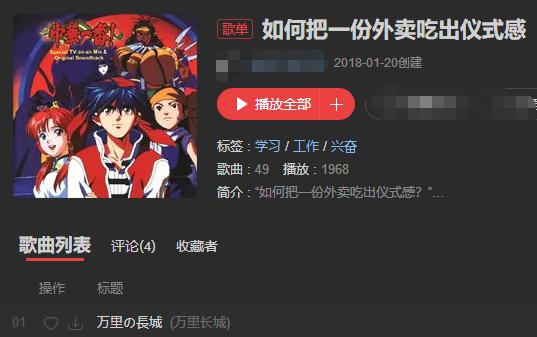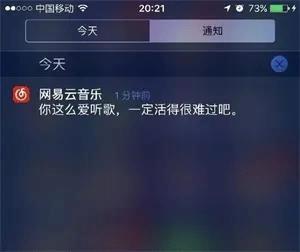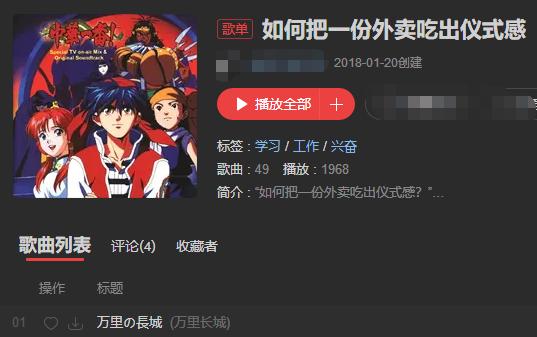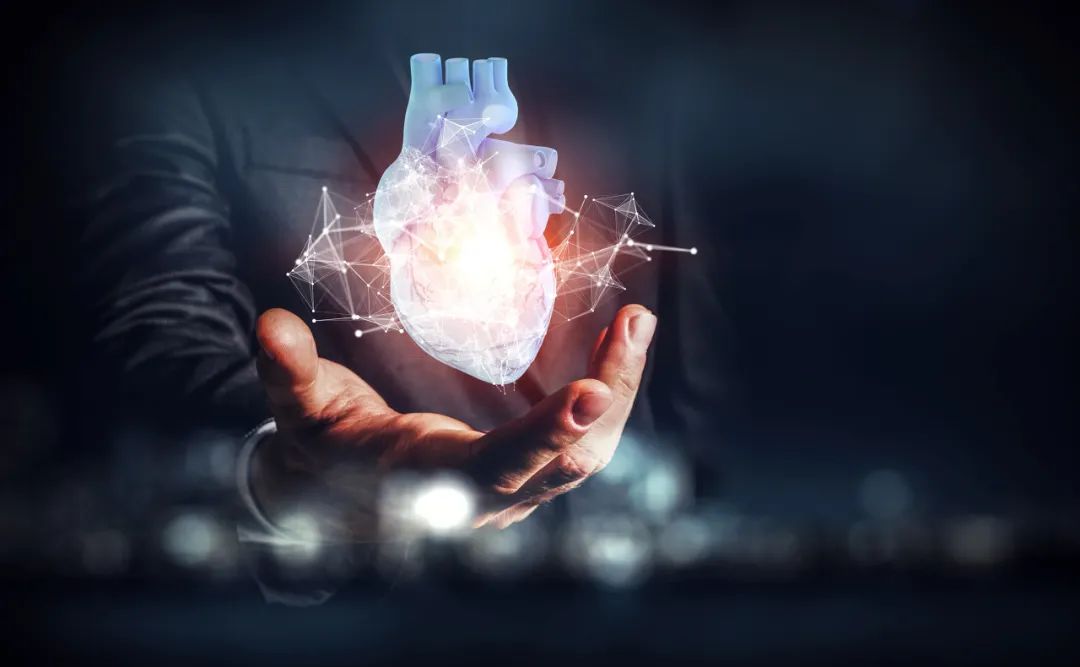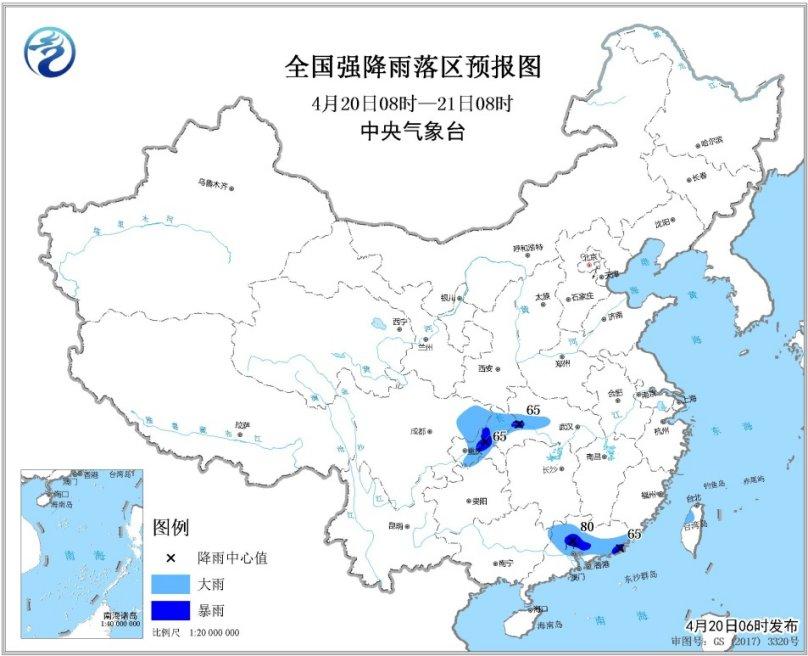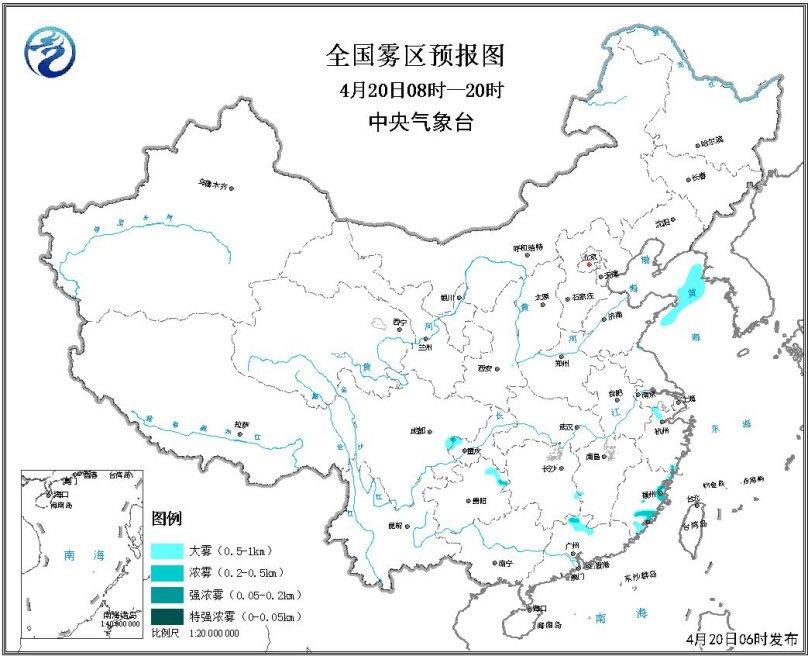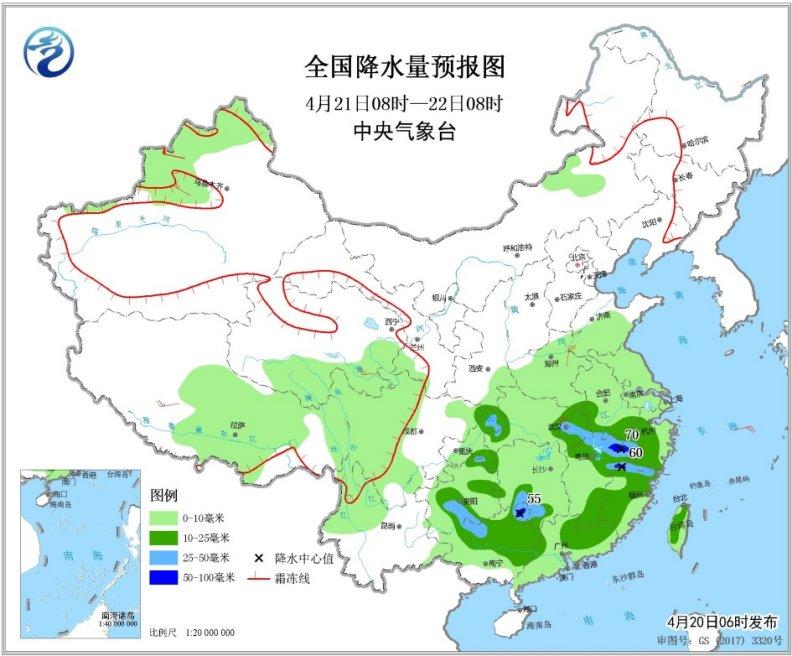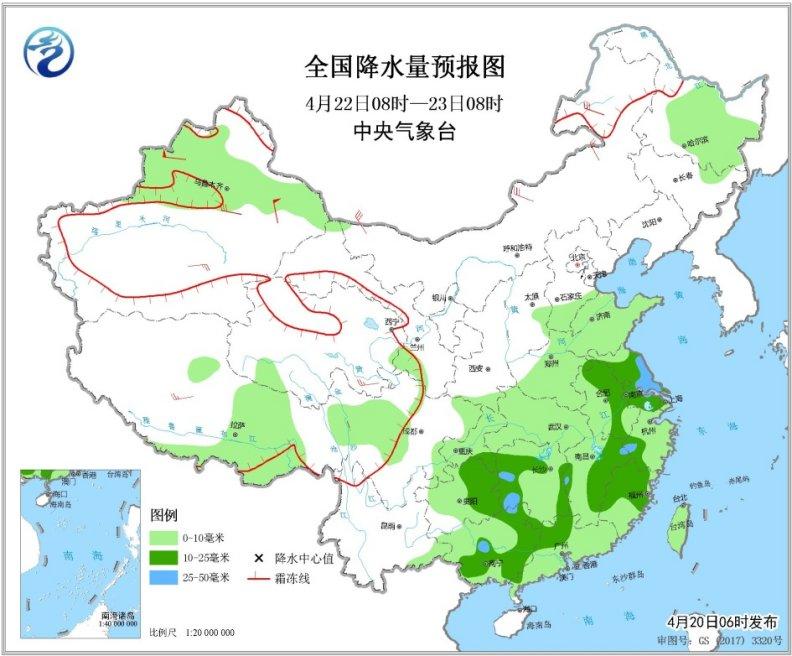Notice of the General Office of Tianjin Municipal People’s Government on Printing and Distributing the Emergency Plan for Tianjin Oil and Gas Long-distance Pipeline Accidents
General Office of Tianjin Municipal People’s Government on Printing and Distributing Tianjin Municipality
Notice of Emergency Plan for Long-distance Oil and Gas Pipeline Accidents
No.13 [2022] of Tianjin Zhengban Regulation
District People’s governments, municipal government commissions, offices and bureaus:
With the consent of the Municipal People’s Government, the Emergency Plan for Long-distance Oil and Gas Pipeline Accidents in Tianjin is hereby issued to you, please implement it accordingly.
General Office of Tianjin Municipal People’s Government
September 19, 2022
Emergency plan for long-distance oil and gas pipeline accidents in Tianjin
1 General rules
1.1 Purpose of compilation
Effectively prevent and deal with accidents in long-distance oil and gas pipelines (hereinafter referred to as oil and gas pipelines), standardize emergency response procedures, improve emergency response capabilities, minimize the degree of accident harm, safeguard national energy security and public safety, promote coordinated and healthy economic and social development, and maintain social stability.
1.2 Compilation basis
According to People’s Republic of China (PRC) Emergency Response Law, People’s Republic of China (PRC) Safety Production Law, People’s Republic of China (PRC) Oil and Gas Pipeline Protection Law, Regulations on Safety Management of Hazardous Chemicals, Tianjin Oil and Gas Pipeline Protection Regulations, Tianjin Overall Emergency Plan and other laws, regulations and normative documents, this plan is formulated in combination with the actual situation of this Municipality.
1.3 Scope of application
This plan is applicable to the emergency treatment of accidents such as leakage, fire or explosion in the process of running, stopping running, sealing and scrapping of the inland oil and gas long-distance pipeline in Tianjin administrative area.
This plan is linked with the Overall Emergency Plan for Emergencies in Tianjin and the Emergency Plan for Hazardous Chemicals Accidents in Tianjin, and has a guiding role for the District People’s Government (hereinafter referred to as the District People’s Government) and member units to formulate emergency plans or safeguard plans for oil and gas long-distance pipeline accidents.
1.4 working principles
(1) adhere to the people-oriented, prevention first. Always put the protection of people’s life and health and property safety in the first place, improve the mechanism and strengthen measures. Implement the policy of safety first, prevention first and comprehensive treatment, adhere to the combination of prevention and emergency response, strengthen prevention, and minimize accidents and personnel and property losses.
(2) Adhere to unified command and be responsible at different levels. In accordance with the deployment requirements of the municipal party committee and the municipal government, the relevant municipal departments, the District People’s governments and relevant enterprises and institutions shall perform their respective duties and deal with them effectively.
(3) Adhere to the combination of standby, specialization and combination. People’s governments at all levels and relevant enterprises make overall plans and integrate resources, set up various professional and part-time emergency teams, and make solid preparations for accidents while doing a good job in daily safety production.
(4) Adhere to scientific disposal and strengthen management. Give full play to the role of experts, professional technology and special equipment, scientifically dispose of them, improve the management level, and continuously improve the emergency response capability.
(5) Adhere to openness and transparency and guide correctly. Comprehensively, timely, legally and accurately release the development and handling of accidents, and correctly guide public opinion.
1.5 accident classification
According to the casualties or direct economic losses caused by oil and gas long-distance pipeline accidents, the oil and gas long-distance pipeline accidents in this city are divided into four grades: particularly serious, major, large and general.
2 Organization and command system
2.1 Command organization
The establishment of emergency headquarters (hereinafter referred to as the municipal headquarters) for the accident of Tianjin oil and gas long-distance pipeline, with the deputy mayor in charge of development and reform as the chief commander and the relevant deputy secretary-general of the Municipal People’s Government and the principal responsible comrades of the Municipal Development and Reform Commission and the Municipal Emergency Bureau as the deputy chief commander.
The main responsibilities of the municipal headquarters are: to implement the relevant laws, regulations, rules and policies on accident prevention and response of long-distance oil and gas pipelines; Organize and carry out the emergency handling of large and above oil and gas long-distance pipeline accidents in this Municipality, and guide the people’s government of the district where the incident occurred to carry out the emergency handling of general oil and gas long-distance pipeline accidents; Do a good job in coordinating with relevant provinces and cities for oil and gas long-distance pipeline accidents in administrative areas across provinces and cities; Request support from relevant state departments and relevant provinces and cities.
2.2 Office
The emergency headquarters Office of Tianjin Oil and Gas Long-distance Pipeline Accident (hereinafter referred to as the Office of the Municipal Command) is under the Municipal Command. The office of the municipal headquarters is located in the Municipal Development and Reform Commission. The director of the office is mainly responsible comrades of the Municipal Development and Reform Commission, and the members are composed of relevant liaison personnel of the member units of the municipal headquarters.
The main duties of the office of the municipal headquarters are: to undertake the daily work of the municipal headquarters; Organize the implementation of the work arrangements of the municipal headquarters; To carry out the compilation and revision of the emergency plan for long-distance oil and gas pipeline accidents in the city; Collect and report accidents and emergency rescue.
2.3 Member units
(1) Municipal Development and Reform Commission: responsible for the supervision and management of pipeline protection within the administrative area of this Municipality, coordinating and handling major issues in pipeline protection, guiding and supervising relevant units to fulfill their obligations of pipeline protection, and investigating and punishing illegal acts endangering pipeline safety according to law; Coordinate the dispatching and supply safety of oil and gas resources in this city after the accident of oil and gas long-distance pipeline; Participate in accident assessment, investigation and handling of long-distance oil and gas pipelines.
(2) Municipal Emergency Bureau: responsible for organizing on-site emergency rescue of oil and gas long-distance pipeline accidents; Organize, coordinate and mobilize relevant professional emergency rescue teams and experts to participate in accident emergency treatment; Organize and guide the rescue assessment, investigation and handling of oil and gas long-distance pipeline accidents of corresponding grades according to law.
(3) Municipal Public Security Bureau: responsible for on-site warning, sealing and control, traffic control and public order maintenance of oil and gas long-distance pipeline accidents to ensure smooth rescue roads; Organize personnel evacuation and evacuation; Responsible for the investigation of suspects suspected of committing crimes in oil and gas long-distance pipeline accidents.
(4) City Fire and Rescue Corps: responsible for organizing fire fighting in oil and gas long-distance pipeline accidents; Carry out emergency rescue work focusing on saving people’s lives.
(5) Propaganda Department of the Municipal Party Committee (Information Office of the Municipal Government): responsible for organizing and guiding relevant units to do a good job in news reporting, information release, public opinion analysis, public opinion guidance and media services of oil and gas long-distance pipeline accidents.
(6) Network Information Office of the Municipal Party Committee: responsible for coordinating the inspection, analysis, judgment and response of relevant online public opinions, timely regulating the online popularity of sensitive topics, and controlling all kinds of online harmful information such as politics, incitement and "backward flow"; Guide the formulation of authoritative voice caliber, and check and eliminate online rumors together; Organize online media and online review teams to carry out online publicity and guidance; Standardize the reporting and online communication order of local online media reporters, and deal with all kinds of illegal behaviors of local website platforms according to law.
(7) Municipal Bureau of Industry and Information Technology: cooperate with relevant departments in the production, storage and transportation of production materials and relief materials needed to deal with oil and gas long-distance pipeline accidents; Responsible for ensuring emergency communication frequency and implementing radio control according to law.
(8) Civil Affairs Bureau: responsible for providing basic living security for the affected people who meet the conditions of temporary relief; Work with the people’s government of the district where the incident occurred to dispose of the remains of the victims.
(9) Municipal Finance Bureau: responsible for providing financial guarantee for emergency treatment of oil and gas long-distance pipeline accidents.
(10) Municipal Bureau of Planning and Resources: responsible for jointly carrying out meteorological risk forecasting and early warning of geological disasters in flood season with the Municipal Meteorological Bureau, and undertaking technical support for emergency rescue of geological disasters; Responsible for surveying and mapping support for emergency handling of accidents.
(11) Municipal Bureau of Ecology and Environment: responsible for evaluating the environmental pollution that may be caused by oil and gas long-distance pipeline accidents; On-site monitoring of environmental pollution caused; Put forward suggestions on pollution disposal, and organize and coordinate relevant units to dispose of accident pollutants; Put forward suggestions on the time and area of establishing and removing pollution warning.
(12) Municipal Housing and Urban-Rural Development Committee: responsible for assisting in the emergency rescue, accident assessment and investigation and handling related to buildings and structures in oil and gas long-distance pipeline accidents, and organizing and coordinating the call of professional rescue teams and large-scale construction machinery in this industry.
(13) Municipal Urban Management Committee (including Municipal Public Utilities Bureau): responsible for guiding the emergency repair of public facilities such as heat supply, gas supply and urban roads and bridges damaged in oil and gas long-distance pipeline accidents.
(14) Municipal Transportation Commission (including Municipal Road Transportation Bureau and Municipal Port and Shipping Bureau): responsible for organizing and coordinating the relevant departments to carry out the work of highway rushing and ensuring traffic; Cooperate with relevant departments to do a good job in ensuring the fast-track service of emergency rescue vehicles in the administrative area of this Municipality; Responsible for the transportation of disaster victims and relief materials; Participate in the emergency handling of hazardous chemical accidents involving port operators of dangerous goods in the port area.
(15) Municipal Health and Wellness Committee: responsible for on-site medical treatment, transportation and in-hospital treatment of injured persons in oil and gas long-distance pipeline accidents, and reporting the number of casualties and medical treatment to the municipal headquarters; Responsible for technical guidance on health and epidemic prevention.
(16) Municipal Market Supervision Committee: responsible for assisting in emergency rescue, accident assessment, investigation and handling related to special equipment in oil and gas long-distance pipeline accidents.
(17) Municipal Meteorological Bureau: responsible for providing meteorological support services for emergency treatment of oil and gas long-distance pipeline accidents, and providing timely meteorological data such as wind direction, wind speed, temperature, humidity, air pressure and rainfall at the accident site and surrounding areas; Assist in the regional judgment of air pollution diffusion caused by oil and gas long-distance pipeline accidents, and make suggestions on the time and region for establishing and lifting pollution alarms.
(18) Municipal Water Affairs Bureau: responsible for assisting in emergency rescue, accident assessment, investigation and handling related to water system in oil and gas long-distance pipeline accidents.
According to the needs of disposal, the municipal headquarters will adjust and supplement the member units in a timely manner.
2.4 Field Command
In the event of a general oil and gas pipeline accident, the district people’s government where the accident occurred shall set up an emergency rescue site command, and the principal responsible comrades of the district people’s government shall be the site commander. In case of a major oil and gas long-distance pipeline accident, the Municipal Command will set up an emergency rescue site command, with the principal responsible comrades of the Municipal Development and Reform Commission as the site commander and the responsible comrades of the Municipal Emergency Bureau as the site deputy commander. In case of particularly serious and major oil and gas long-distance pipeline accidents, in accordance with the deployment requirements of the municipal party Committee and the municipal government, the on-site headquarters will be established based on the municipal headquarters. If the site commander-in-chief changes, the handover of relevant work should be done well.
2.5 Working Group
According to the disposal needs, the on-site command can set up working groups such as comprehensive coordination group, emergency disposal group, order maintenance group, medical treatment group, environmental monitoring group, comprehensive support group and news public opinion group.
(1) comprehensive coordination group. Led by the Municipal Development and Reform Commission, with the participation of the people’s government of the district where the incident occurred and the members of the municipal headquarters, it is responsible for coordinating the dispatching and supply safety of oil and gas resources in this city after the oil and gas long-distance pipeline accident; To undertake the on-duty work of the on-site command, and be responsible for receiving and forwarding the instructions of the municipal command; Collect and summarize the on-site disposal and emergency rescue documents.
(2) Emergency response team. Led by the Municipal Emergency Bureau, with the participation of the Municipal Fire and Rescue Corps, the Municipal Market Supervision Committee, the Municipal Housing and Urban-Rural Development Committee, the Municipal Planning and Resources Bureau and other relevant departments in the area where the incident occurred, as well as oil and gas long-distance pipeline enterprises, it is responsible for collecting and summarizing relevant data, making accident situation judgments, organizing the formulation of accident emergency response work plans, and organizing the implementation of the plans; Effectively carry out on-site control and search and rescue of people in distress; Organize and coordinate emergency experts, rescue teams and relevant forces to participate in emergency response work in an orderly manner.
(3) order maintenance group. Led by the Municipal Public Security Bureau, with the participation of relevant departments in the district where the accident occurred, it is responsible for on-site protection, maintaining public order and vigilance, implementing traffic control, and ensuring smooth rescue roads; Responsible for organizing the evacuation of personnel in the toxic substance diffusion area; Responsible for the identity verification of the dead and missing persons and the identification of the victims.
(4) Medical treatment group. Led by the Municipal Health and Wellness Committee, responsible for organizing relevant medical institutions to rush to the scene of the accident in time to carry out medical treatment and transshipment of the wounded; Inform the on-site command about the medical treatment of the wounded.
(5) Environmental Monitoring Group. Led by the Municipal Bureau of Ecology and Environment, with the participation of the Municipal Water Affairs Bureau and the Municipal Meteorological Bureau, it is responsible for monitoring the atmosphere, water quality and soil at the scene of the accident, putting forward pollution control suggestions and assisting in verifying the pollution damage; Provide meteorological support services, provide meteorological data, forecast and early warning information of the accident site and surrounding areas, and provide technical basis for judging the diffusion direction and scope of toxic and harmful gases.
(6) Comprehensive support group. Led by the district people’s government where the incident occurred, with the participation of the Municipal Bureau of Industry and Information Technology, the Municipal Finance Bureau, the Civil Affairs Bureau, the Municipal Emergency Bureau, the Municipal Transportation Commission, the Municipal Urban Management Committee and other departments, it is responsible for providing comprehensive service resources in a timely manner according to the needs of accident handling.
(7) News and public opinion group. Led by the Propaganda Department of the Municipal Party Committee (Information Office of the Municipal Government), with the participation of relevant municipal departments and the people’s government of the district where the incident occurred, it is responsible for organizing the drafting of press releases and notices on accidents of oil and gas long-distance pipelines, formulating press release plans, organizing press releases in a timely manner, and carrying out public opinion monitoring and response work.
2.6 District level emergency command organization
According to the principle of territorial management, an emergency command organization for oil and gas long-distance pipeline accidents shall be established in the area where the oil and gas long-distance pipeline passes, which shall be responsible for the general oil and gas long-distance pipeline accidents within its jurisdiction, timely carry out the pre-treatment of large and above oil and gas long-distance pipeline accidents, and cooperate with the municipal headquarters to do the emergency treatment; Responsible for the construction and management of emergency rescue teams and emergency materials and equipment required within their respective jurisdictions; Responsible for the evacuation, resettlement, living security and social stability of the people in the accident area; Responsible for oil and gas cleaning, collection and after-treatment at the accident site.
3 Prevention and early warning
3.1 Monitoring
Oil and gas long-distance pipeline enterprises should establish an oil and gas long-distance pipeline operation monitoring mechanism, implement the main responsibility of the enterprise, organize risk assessment and risk management, manage risks as early as possible, properly control risks, and report information that may cause pipeline accidents or other disasters to the relevant municipal departments, units and the local District People’s government in a timely manner.
The District People’s Government shall establish and improve the information monitoring system for oil and gas long-distance pipeline accidents, improve the information sharing mechanism, collect information through various channels such as daily inspections, grass-roots units’ reports and social public reports, strengthen the comprehensive analysis and evaluation of information, and improve the accuracy and timeliness of relevant forecasts. Major holidays, major events, sensitive periods, disastrous weather and other special periods, supervision and inspection should be strengthened, and emergency duty and information reporting should be strengthened.
3.2 Early warning
3.2.1 Early warning forwarding
The office of the municipal headquarters analyzes and judges the information received from meteorological and geological disasters that may lead to oil and gas long-distance pipeline accidents, forwards the risk warning information to the oil and gas long-distance pipeline enterprises in time, and requires the oil and gas long-distance pipeline enterprises to strengthen prevention and reduce the possibility of pipeline accidents.
3.2.2 Early warning response
(1) After receiving the early warning information, oil and gas long-distance pipeline enterprises shall take the following measures as appropriate:
① Strengthen the inspection and monitoring of long-distance oil and gas pipelines;
② Pay close attention to the weather change and the development trend of geological disasters, and predict the possibility, influence range and possible accident level of oil and gas long-distance pipeline accidents;
(3) prepare or directly start the corresponding emergency plan, and the emergency rescue team and professionals are on standby;
(4) Assemble materials and equipment needed for emergency treatment and rescue, and take temporary engineering measures for relevant oil and gas long-distance pipelines as required;
⑤ Other necessary preventive and protective measures stipulated by laws, regulations and rules.
(2) After receiving the early warning information, the district people’s governments and relevant member units shall take the following measures as appropriate:
① Pay close attention to the weather changes and the development trend of geological disasters, forward the latest trends in time, keep close contact with oil and gas long-distance pipeline enterprises, and timely grasp the influence of weather and geological disasters fed back by oil and gas long-distance pipeline enterprises on oil and gas long-distance pipelines;
(2) Be prepared to start the emergency plan for oil and gas long-distance pipeline accidents, release relevant information to the public who may be affected by oil and gas long-distance pipeline accidents when necessary, and make good preparations for personnel evacuation in relevant areas;
(3) Organize prevention and control of key parts, restrict the use of places vulnerable to accidents of long-distance oil and gas pipelines, implement traffic control when necessary, and close dangerous areas and roads;
(4) Organize relevant emergency rescue teams and professionals to enter standby state, and assemble and raise materials and equipment needed for emergency treatment and rescue;
⑤ Other necessary preventive and protective measures stipulated by laws, regulations and rules.
4 information reporting and pre-disposal
4.1 Information report
4.1.1 Reporting procedure
In the event of a long-distance oil and gas pipeline accident, the oil and gas pipeline enterprise shall immediately start the emergency plan for the pipeline accident of the enterprise, timely notify the residents and units that may be harmed by the accident in accordance with the regulations, take effective measures to eliminate or reduce the accident harm, and report to the development and reform, emergency management, public security, ecological environment and other departments in the area where the accident occurred in accordance with the regulations, and shall not conceal, falsely report or delay the report. After receiving the report, the relevant departments in the district where the incident occurred should report the relevant information to the District People’s Government and the relevant municipal departments by telephone within 30 minutes and in writing within 1 hour. The relevant departments of the district and city where the incident occurred shall report the basic situation of the accident to the municipal party committee and government in writing within 30 minutes and 1 hour after receiving the report, in accordance with the principle of receiving the report and reporting it at any time. For the municipal party committee and municipal government to verify the situation, the telephone feedback time shall not exceed 20 minutes. After the city leaders give instructions and put forward requirements, the relevant districts and departments should report the implementation in a timely manner.
4.1.2 Report content
The contents of the report include the reporting unit, the name of the reporter, the source of information, the time and place of the accident, the initial casualties and the measures taken. After the initial report, the information reporting unit shall timely report the accident dynamics and disposal progress.
4.2 Pre-disposal
4.2.1 Enterprises involved
Quickly cut off oil and gas sources and power supply, set up warning signs, and notify units and personnel within the scope of accident hazards to evacuate and transfer quickly; Take effective measures to prevent the situation from expanding and secondary disasters; Quickly mobilize enterprise rescue teams and emergency rescue materials and equipment to carry out emergency rescue work.
4.2.2 District People’s Government
According to the nature of the incident, the degree of harm, the scope of influence and the development trend, quickly mobilize forces to carry out emergency rescue; Take effective measures to control the development of the situation; Quickly transfer, evacuate, and evacuate people who are endangered or threatened by accidents and properly arrange them; Organize medical treatment, traffic control, and maintaining social order.
5 emergency response
5.1 Response classification
According to the damage degree and influence scope of the oil and gas long-distance pipeline accident, the emergency response of the oil and gas long-distance pipeline accident in this city is divided into three levels, from low to high, they are level 3, level 2 and level 1 respectively.
5.1.1 Three-level emergency response
When it is initially judged that a general oil and gas long-distance pipeline accident occurs, the district-level emergency response will be started in the area where the accident occurred, and the municipal headquarters office will start the third-level emergency response as appropriate.
(1) The director of the municipal headquarters office, responsible comrades of the Municipal Development and Reform Commission, the Municipal Emergency Bureau, the Municipal Fire Rescue Corps, the Municipal Market Supervision Commission, the Municipal Housing and Urban-Rural Construction Commission, the Municipal Planning and Resources Bureau, the Municipal Public Security Bureau, the Municipal Health and Wellness Commission, the Municipal Ecological Environment Bureau, the Municipal Water Affairs Bureau, the Municipal Meteorological Bureau, the Municipal Bureau of Industry and Information Technology, the Municipal Finance Bureau, the Civil Affairs Bureau, the Municipal Transportation Commission, the Municipal Urban Management Commission, the Municipal Propaganda Department and the Municipal Network Information Office rushed to the site. Each working group and the member units of the municipal headquarters organize relevant personnel of their own groups and departments to take up their posts in their own units and departments, and prepare for emergency response.
(2) Disposal work
① Office of the Municipal Command: collect and sort out the emergency handling of oil and gas long-distance pipeline accidents in the area where the incident occurred in time, make statistics on the casualties and losses of the accidents, report them to the responsible comrades of the Municipal Command, and notify the relevant units.
② Comprehensive coordination group: receiving and forwarding instructions for emergency handling of oil and gas long-distance pipeline accidents; Timely coordinate and track the implementation of emergency disposal instructions for oil and gas long-distance pipeline accidents by the people’s government of the district where the incident occurred and relevant units; Do a good job in coordinating the oil and gas resources dispatching in this city after the oil and gas long-distance pipeline accident.
③ Emergency response group: to guide the people’s government of the district where the incident occurred to do a good job in emergency response to oil and gas long-distance pipeline accidents; Organize emergency rescue experts to stand by for 24 hours, and prepare for emergency rescue technical guidance for oil and gas long-distance pipeline accidents at any time; Organize relevant professional emergency rescue teams to stand by; Send experts to provide technical support as needed.
④ Medical treatment group: guiding the people’s government of the district where the incident occurred to do a good job in medical treatment of the wounded; Notify relevant medical institutions to prepare for rushing to the scene of the accident to carry out medical treatment for the wounded.
⑤ Order maintenance group: According to the field situation, make preparations for starting the second-level emergency response, such as on-site warning and control, traffic control, public order maintenance and smooth rescue roads.
⑥ Environmental monitoring group: guide the area where the incident occurred to provide meteorological support services; Pay close attention to the changes of the situation, and make preparations for starting the second-level emergency response to provide meteorological support services and monitoring the atmosphere, water quality and soil at the accident site.
⑦ Comprehensive support group: sort out emergency materials and equipment for oil and gas long-distance pipeline accidents and prepare for allocation.
⑧ News and public opinion group: to guide the area where the incident occurred to organize the release of accident information of long-distance oil and gas pipelines; Guide the area where the incident occurred to carry out public opinion monitoring and response work.
Pet-name ruby other members of the city headquarters in accordance with their duties to do a good job in oil and gas long-distance pipeline accident emergency rescue preparation and security work.
5.1.2 Secondary Emergency Response
When a large oil and gas long-distance pipeline accident was initially judged, the municipal headquarters decided to start the second-level emergency response.
(1) On the basis of the three-level emergency response personnel, all members of the municipal headquarters in charge of the responsible comrades organize their own personnel to rush to the scene of the accident, and carry out corresponding emergency response work according to the division of responsibilities in this plan, the emergency plan of the unit department and the command and dispatch of the municipal headquarters.
(2) the director of the office of the municipal headquarters presided over a consultation meeting at the on-site headquarters to organize and coordinate the emergency response work.
(3) Disposal work
All working groups, relevant departments and units, on the basis of doing a good job in three-level emergency response, further do the following work:
① Field headquarters: The field commander-in-chief is responsible for overall planning of emergency response work, mainly directing and coordinating the emergency response work of comprehensive coordination group, environmental monitoring group, comprehensive support group and news and public opinion group; The deputy commander-in-chief on site is responsible for conducting emergency response command and dispatch, mainly directing and coordinating the emergency response work of emergency response group, order maintenance group and medical treatment group.
② Comprehensive coordination group: to coordinate the oil and gas resources dispatching and supply safety in this city after the oil and gas long-distance pipeline accident; To undertake the on-duty work of the on-site headquarters, and receive and forward the instructions of the municipal headquarters; Collect and summarize the on-site disposal and emergency rescue documents.
③ Emergency response group: collect and summarize relevant data, make accident situation judgment, organize the formulation of accident emergency response work plan, and organize the implementation of the plan; Effectively carry out on-site control and search and rescue of people in distress; Organize and coordinate emergency experts, rescue teams and relevant forces to participate in emergency response work in an orderly manner.
(4) Order maintenance group: protect the accident site, maintain public order and vigilance, implement traffic control, and ensure the smooth rescue road; Organize the evacuation of personnel in the toxic substance diffusion area; Check the identity of the dead and lost, and identify the identity of the victims.
⑤ Medical treatment group: rushed to the scene of the accident in time to carry out medical treatment and transportation of the wounded; Inform the on-site command about the medical treatment of the wounded.
⑥ Environmental monitoring group: pay close attention to the weather changes and provide meteorological data, forecast and early warning information of the accident site and surrounding areas; Monitor the environmental pollution of the atmosphere, water quality and soil at the accident site, put forward pollution control suggestions, assist in verifying the pollution damage, and provide technical basis for judging the diffusion direction and scope of toxic and harmful gases.
⑦ Comprehensive support group: notify the relevant personnel of the emergency rescue materials reserve unit to take up their posts, make good preparations for dispatching emergency materials, and the reserve unit will organize dispatching in time as appropriate; According to the transportation route of rescue and relief materials, organize to ensure the traffic order along the road to ensure that the rescue and relief materials are in place in time; Plan and assemble transport vehicles needed for emergency rescue and disaster relief operations, and perform transportation tasks at any time; To guide the people’s government of the district where the incident occurred to prepare for the emergency rescue team and the people around the accident; Provide financial guarantee for the emergency treatment of oil and gas long-distance pipeline accidents.
⑧ News and public opinion group: organize the drafting of press releases and notices on accidents of long-distance oil and gas pipelines, formulate press release plans, organize press releases in a timely manner, and carry out public opinion monitoring and response work.
Pet-name ruby other members of the city headquarters in accordance with their duties to do a good job in oil and gas long-distance pipeline accident emergency rescue preparation and security work.
5.1.3 Level I Emergency Response
When a particularly serious oil and gas long-distance pipeline accident is initially judged, according to the decision of the municipal party Committee and the municipal government, the municipal headquarters will start the first-level emergency response; In the event of a major oil and gas pipeline accident, the municipal headquarters decided to start the first-level emergency response.
(1) The chief commander, deputy chief commander of the municipal headquarters and the main responsible comrades of relevant member units rushed to the scene of the accident, and the municipal headquarters turned into the on-site headquarters to formulate emergency response plans and organize rescue work.
(2) The commander-in-chief of the municipal headquarters presided over a consultation meeting at the on-site headquarters to organize and coordinate the emergency response work.
(3) Disposal work
All working groups, relevant departments and units, on the basis of secondary emergency response, further do the following work:
① On-site headquarters: organize all working groups, relevant departments and units to do a good job according to the division of responsibilities.
② Comprehensive coordination group: to coordinate the oil and gas resources dispatching and supply safety in this city after the oil and gas long-distance pipeline accident.
(3) Emergency response group: request support from relevant state departments and relevant provinces and cities; In conjunction with the relevant departments, organize the emergency rescue teams and experts from relevant countries and relevant provinces and cities to participate in the emergency rescue and relief work of oil and gas long-distance pipeline accidents.
④ Order maintenance group: organize the evacuation of personnel in the toxic substance diffusion area; Check the identity of the dead and lost, and identify the identity of the victims.
⑤ Environmental monitoring group: According to the needs of the on-site command, provide meteorological data, forecast and early warning information of the accident site and surrounding areas at any time.
⑥ Comprehensive support group: in conjunction with relevant departments, do a good job in receiving emergency relief materials from relevant state departments and relevant provinces and cities, and notify relevant departments to do a good job in relevant transportation; Coordinate the transportation of vehicles and materials needed by relevant state departments and relevant provinces and cities to reinforce emergency rescue and disaster relief operations.
⑦ News and public opinion group: organize a press conference in a rolling way to inform the media about the progress of accident handling of oil and gas long-distance pipelines.
⑧ Other members of the Municipal Command shall, according to their duties, organize and direct their own systems and industries to devote themselves to the emergency rescue of oil and gas long-distance pipeline accidents, and ensure that all preventive measures are put in place.
Pet-name ruby the city’s relevant professional emergency rescue team into the state of emergency rescue, all kinds of emergency materials support units for oil and gas long-distance pipeline accident rescue and relief work to provide full protection.
5.2 Professional Disposal Measures
In addition to the emergency response measures specified in the Tianjin Emergency Plan for Hazardous Chemicals Accidents, the on-site headquarters should take targeted measures for the emergency treatment of oil and gas long-distance pipeline accidents according to the characteristics and actual situation of oil and gas long-distance pipelines.
(1) Oil and gas long-distance pipeline leakage accident
(1) the scene to implement emergency closure, blockade, traffic control, rapid evacuation of the evacuation crowd, the implementation of emergency evacuation, transfer the injured;
(2) immediately eliminate the on-site fire, detect and estimate the warning, isolation and preparedness distance according to wind direction, wind speed, water flow, topography, underground space and facilities, surrounding environment, oil and gas leakage and diffusion direction, and assist in personnel evacuation;
③ Cooperate with the professional pipeline rescue team to seal the plugging point, remove the leaked oil and gas, and complete the emergency repair of damaged pipelines.
(2) Fire and explosion accidents of long-distance oil and gas pipelines
① Implement emergency closure and blockade on site, implement traffic control, quickly evacuate evacuated people, implement emergency avoidance, transfer injured people, and delimit the area that may be affected by fire and explosion;
(2) According to the different characteristics of crude oil, refined oil and natural gas, correctly choose fire fighting routes and methods to control the spread of fire and prevent the situation from expanding or secondary disasters;
③ Cooperate with the professional pipeline rescue team to repair the damaged pipeline and remove the residual oil and gas at the site.
5.3 Information release
Under the guidance of the Propaganda Department of the Municipal Party Committee, the information release of general oil and gas long-distance pipeline accidents shall be implemented by the Propaganda Department of the district party committee where the incident occurred; The information release of large and above oil and gas long-distance pipeline accidents shall be coordinated by the Propaganda Department of the Municipal Party Committee, and the news and public opinion group of the on-site headquarters shall be responsible for the implementation.
In case of major and above oil and gas long-distance pipeline accidents, brief information will be released to the society at the first time according to the procedure, authoritative information will be released within 5 hours, and a press conference will be held in the name of the accident handling news center within 24 hours, and the deputy mayor in charge, the main responsible comrades in the district where the accident occurred and the responsible comrades of relevant departments will release the accident handling information. Continue to release authoritative information by dynamically releasing the progress of disposal and organizing centralized interviews.
5.4 End of emergency
5.4.1 When the emergency handling of oil and gas long-distance pipeline accidents is finished, the accident hazards or threats are controlled and eliminated, and the emergency handling is finished.
5.4.2 For general oil and gas long-distance pipeline accidents, the area where the accident occurred shall announce the end of emergency and report to the office of the municipal headquarters; Large and major oil and gas long-distance pipeline accidents, the municipal headquarters announced the end of the emergency; After the major oil and gas long-distance pipeline accident is approved by the municipal party Committee and the municipal government, the municipal headquarters will announce the end of the emergency.
5.4.3 The office of the municipal headquarters shall timely inform the relevant member units of the municipal headquarters and the district people’s government where the incident occurred. When necessary, release emergency termination information to the public through information release platforms and news media.
6 post-disposal
6.1 aftermath
The people’s government of the district where the incident occurred, the departments of emergency management, development and reform, public security, civil affairs, ecological environment, transportation, sanitation and health, and oil and gas long-distance pipeline enterprises should perform their respective duties and do a good job in the aftermath of the wounded, traffic recovery, pollutant cleaning and so on. Oil and gas long-distance pipeline enterprises shall, under the guidance of relevant departments and experts, pay close attention to the repair and on-site cleaning of facilities and equipment, and resume the operation of oil and gas long-distance pipelines as soon as possible.
6.2 Investigation and evaluation
The investigation and evaluation of accidents shall be carried out in accordance with relevant regulations. The investigation and evaluation of general oil and gas long-distance pipeline accidents shall be organized and carried out by the relevant departments of the district people’s government where the accident occurred. The investigation and evaluation of large oil and gas long-distance pipeline accidents shall be organized by the relevant departments of the Municipal People’s Government. The investigation and evaluation of major oil and gas long-distance pipeline accidents shall be organized by the Municipal People’s Government. The investigation and evaluation of particularly serious oil and gas long-distance pipeline accidents shall be carried out under the organization of the departments authorized by the State Council or the State Council, and this Municipality shall cooperate with relevant work.
7 emergency support
7.1 Team Support
Oil and gas long-distance pipeline enterprises should establish emergency rescue teams, equip them with necessary equipment and facilities, actively carry out rescue knowledge and professional skills training and drills, and ensure that the teams are in a good standby state at any time.
7.2 Material support
Oil and gas long-distance pipeline enterprises should reserve and equip equipment and materials that can meet the emergency rescue needs of oil and gas long-distance pipeline accidents according to their own nature and characteristics, and ensure that the equipment and materials are always in good condition.
7.3 Financial guarantee
The financial expenses required for handling oil and gas long-distance pipeline accidents shall be borne in different levels according to the principle of dividing financial affairs and expenditure responsibilities.
The cost of emergency rescue for oil and gas long-distance pipeline accidents shall be borne by the accident responsible unit first, and if the accident responsible unit is unable to bear it, it shall be solved by the people’s government of the district where the accident occurred.
Long-distance oil and gas pipeline enterprises shall, in accordance with the provisions, extract the safety production expenses to ensure the daily monitoring of dangerous sources, preventive and early warning measures, emergency training and drills, and meet the needs of long-distance oil and gas pipeline accidents.
7.4 Publicity, education and training
7.4.1 Publicity and education
Oil and gas long-distance pipeline enterprises should inform employees and surrounding people of the main dangers and harms of oil and gas long-distance pipeline accidents, and publicize emergency laws and regulations and knowledge of accident prevention, hedging, self-help and mutual rescue.
7.4.2 Training
The relevant departments (units) of the municipal and district people’s governments shall, in accordance with the affiliation and management responsibilities, strengthen the training of professional emergency rescue teams in their own systems and fields, and improve their decision-making and disposal capabilities in response to oil and gas long-distance pipeline accidents.
Oil and gas long-distance pipeline enterprises should strengthen pre-job training to ensure that employees have the necessary knowledge of safety production, master the rules and regulations of safety production and safe operation procedures, and have the skills of safe operation in this position and the ability to handle oil and gas long-distance pipeline accidents; Safety production management personnel shall pass the examination of their safety production knowledge and management ability by the competent department responsible for safety production supervision and management; Special operations personnel must receive special safety operation training in accordance with the relevant provisions of the state and obtain corresponding qualifications before taking up their posts.
8 supplementary provisions
8.1 Interpretation of the Plan
The interpretation of this plan shall be undertaken by the Municipal Development and Reform Commission.
8.2 Plan preparation
The District People’s Government shall, in accordance with the relevant laws, regulations, rules, the emergency plans of the people’s government at a higher level and its relevant departments and the actual situation in this district, organize relevant departments to formulate emergency plans for oil and gas long-distance pipeline accidents within their respective administrative areas and report them to the Municipal Development and Reform Commission for the record; The member units of the Municipal Command shall, in accordance with this plan, formulate the emergency support plan (scheme) for the long-distance oil and gas pipeline accident of this department, submit it to the Municipal People’s Government for the record, and send a copy to the Municipal Emergency Bureau and the Office of the Municipal Command.
8.3 plan revision
City headquarters office should be combined with emergency management practice, timely organize the revision of emergency plans.
8.4 preplan drill
The municipal and district people’s governments and their relevant departments shall organize at least one special emergency plan drill every 2 years. Oil and gas long-distance pipeline enterprises shall organize at least one comprehensive emergency plan drill or special emergency plan drill every year, and at least one on-site disposal plan drill every six months, and establish a continuous improvement mechanism for emergency plans.
8.5 Plan implementation
This plan shall be implemented as of the date of issuance and shall be valid for 5 years.
Attachment: 1. Classification standard for accidents of long-distance oil and gas pipelines
2. Risk analysis of oil and gas long-distance pipeline accidents
Annex 1
Classification standard for accidents of long-distance oil and gas pipelines
First, particularly serious oil and gas long-distance pipeline accidents
In case of any of the following circumstances, it is a particularly serious oil and gas long-distance pipeline accident:
(1) accidents that caused more than 30 deaths;
(2) Accidents that cause serious injuries to more than 100 people;
(3) Accidents that cause direct economic losses of more than 100 million yuan.
Second, major oil and gas long-distance pipeline accidents
Any one of the following circumstances is a major oil and gas long-distance pipeline accident:
(1) an accident that caused more than 10 people and less than 30 people to die;
(2) Accidents that cause serious injuries to more than 50 people and less than 100 people;
(3) Accidents that cause direct economic losses of more than 50 million yuan and less than 100 million yuan.
Three, a large oil and gas pipeline accident
Any one of the following circumstances shall be considered as a major oil and gas long-distance pipeline accident:
(1) an accident that causes more than 3 people and less than 10 people to die;
(2) Accidents that cause serious injuries to more than 10 people and less than 50 people;
(3) Accidents that cause direct economic losses of more than 10 million yuan and less than 50 million yuan.
Four, the general oil and gas pipeline accident
Any accident that meets one of the following circumstances is a general oil and gas long-distance pipeline accident:
(1) an accident that killed less than 3 people;
(2) Accidents that cause serious injuries to less than 10 people;
(3) Accidents that cause direct economic losses of less than 10 million yuan.
The "above" mentioned in this plan includes the number, and "below" does not include the number.
Annex 2
Accident risk analysis of long-distance oil and gas pipeline
First, the main risk factors leading to oil and gas long-distance pipeline accidents
Petroleum and natural gas are dangerous chemicals. Oil and natural gas transported by long-distance oil and gas pipelines are characterized by high pressure, flammability and explosion. The main reasons that may lead to oil and gas long-distance pipeline accidents include:
(1) The pipeline body fails, resulting in leakage, fire and explosion accidents.
(2) Man-made damage: misoperation, construction hazards, occupation, heavy-load rolling of pipelines, damage to pipelines by moving, cutting, punching, smashing and dismantling, theft of oil and natural gas transported, stored, leaked and discharged by pipelines, and terrorist attacks, which lead to accidents such as pipeline leakage, fire or explosion.
(3) Natural disasters: geological disasters such as earthquake, collapse and land subsidence, and floods, etc., which cause pipeline leakage, fire or explosion accidents.
Second, the possible impact
(1) Casualties and property losses
Fire or explosion occurs at the scene of oil and gas leakage, or the leaked oil and gas spreads through urban floor drains, pipe trenches, box culverts and other infrastructure, and is ignited in case of fire, resulting in large-scale fire and explosion. People’s lives and property are seriously threatened.
(2) Environmental pollution
If a large amount of leaked oil and gas spreads, it will lead to serious pollution of drinking reservoirs, rivers, groundwater, soil and air.
(3) Energy cut-off
The emergency shutdown of the oil and gas pipeline will also affect the normal operation of other oil and gas pipelines, water supply, power supply and other facilities parallel or intersecting with it.
(D) Social impact
Leaking oil and gas may cause fire, explosion and personnel poisoning, and the affected areas may need power failure, traffic interruption, large-scale shutdown and suspension of classes, resulting in adverse social impact.

























